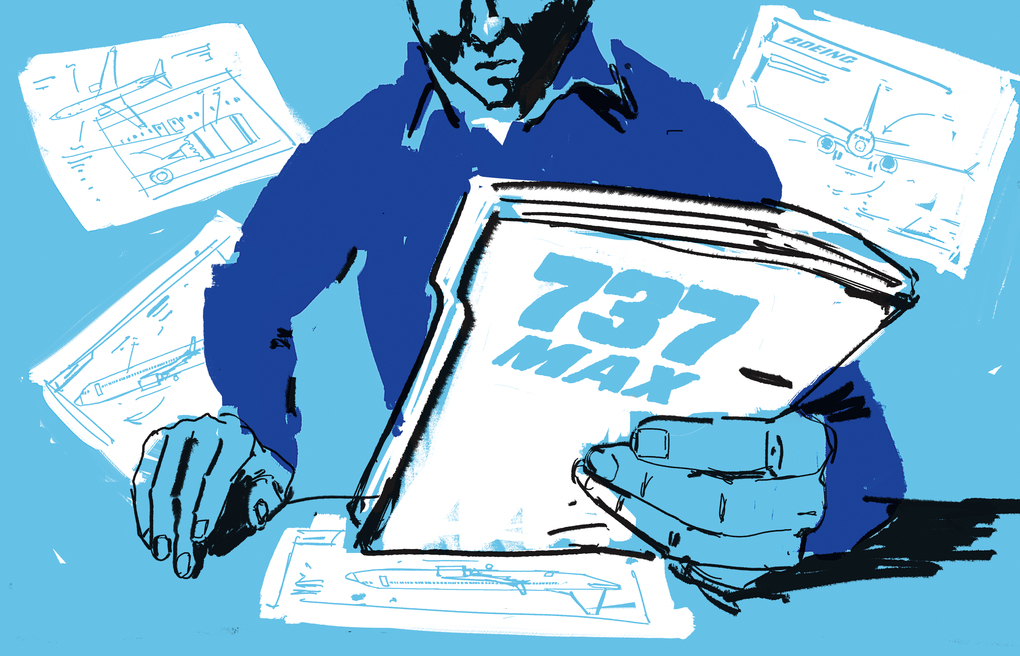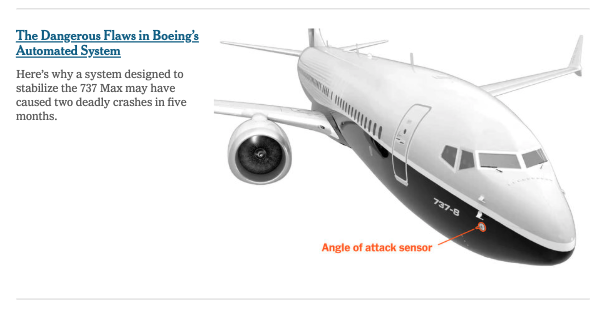HUGE BETRAYAL! How did Boeing ever put profit over safety…with passenger jets?
Bombshell Report: Boeing ‘Whistleblower’ Says Company Focused On Profit Over Safety Of Doomed 737 Max
ZeroHedge.com
The New York Times has published a bombshell report about a new complaint filed against Boeing by a senior engineer, alleging the aircraft maker concentrated on prioritizing profits over the safety of the 737 Max airliner.
The Times learned about the new development from a source who requested anonymity, said the Boeing engineer filed the complaint after the two crashes (Lion Air accident in October 2018 and Ethiopian Airlines accident in March 2019).
Curtis Ewbank, the senior Boeing engineer who filed the complaint, called out top executives for publicly misrepresenting the safety of the plane.
Ewbank designed the 737 Max cockpit systems that pilots use to monitor and control the airplane.
He said in the complaint that managers wanted him to examine a new system for measuring the plane’s airspeed. The new system, known as synthetic airspeed, uses several sensors to measure how fast a 737 Max is flying.
Ewbank said when the angle-of-attack sensors, which measure the plane’s position in the sky, malfunctioned, it would send bad data to other flight systems that would cause the aircraft to crash.
In both crashes of the 737 Max, it’s widely believed that the angle-of-attack sensors failed, then sent bad data to the Maneuvering Characteristics Augmentation System (MCAS) flight control system, which sent the planes into uncontrollable nosedives.
Ewbank said in the complaint to Boeing, “It is not possible to say for certain that any actual implementation of synthetic airspeed on the 737 Max would have prevented the accidents.” He said Boeing cut corners on the development of the 737 Max, at the expense of safety, all to please shareholders.
Ewbank’s complaint said that Ray Craig, a chief test pilot of the 737 Max, wanted to examine additional sensors on the plane, such as the synthetic airspeed system. Still, Boeing executives frowned upon the idea because it would cost too much.
“I was willing to stand up for safety and quality, but was unable to actually have an effect in those areas,” Ewbank said in the complaint, adding, “Boeing management was more concerned with cost and schedule than safety or quality.”
A former senior Boeing employee, who spoke on the condition of anonymity with The Times, said senior executives considered installing the new sensors on the 737 Max, but realized it would be too difficult and risky for the plane.
Ewbank’s complaint wasn’t filed during the development process of the 737 Max. Ewbank feared that upper management would retaliate if he did so.
He stepped forward this year and explained in the complaint that it’s the “ethical imperative of an engineer — to protect the safety of the public.”
“Boeing is not in a business where safety can be treated as a secondary concern,” Mr. Ewbank wrote in the complaint. “But the current culture of expediency of design-to-market and cost cutting does not permit any other treatment by the work force tasked with making executive managements’ fever dreams a reality.”
And by prioritizing profits, Boeing executives certainly seemed to rush the 737 Max from development into production, at the expense of safety, not just to contend with the Airbus A320neo, but to unlock billions of dollars in stock buybacks that were tied to significant milestones relating to plane’s sales. This enabled Boeing’s stock to rise nearly 300% in 36 months, while executives used the opportunity to dump company stock.

